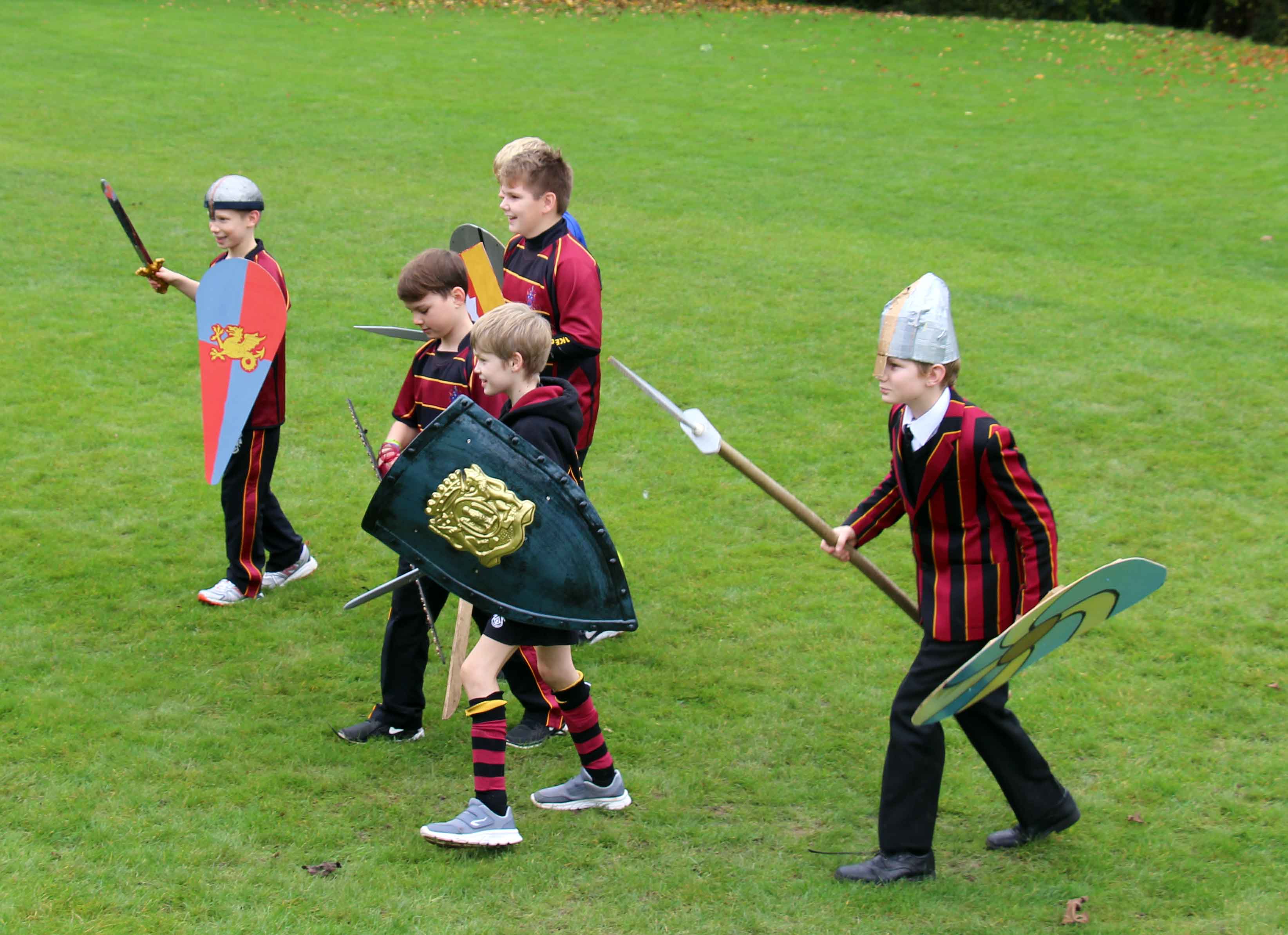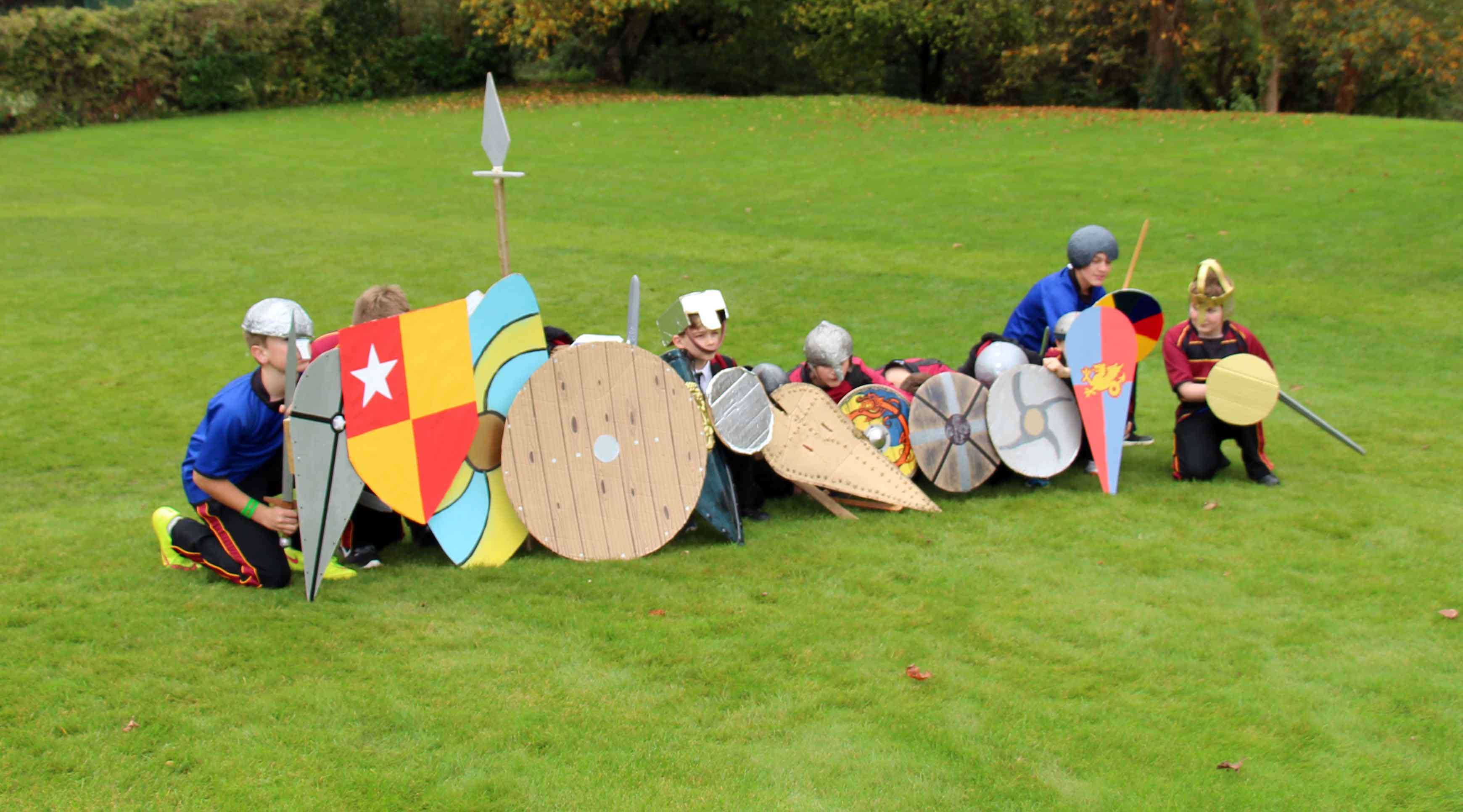
Year 7 historians were treated to a rather unusual History lesson, courtesy of Mr Jonathan Gillespie-Payne; donning cardboard shields and foil-covered helmets, the boys trooped out to Skipwith lawn, in order to learn about the Battle of Hastings in a far more interactive setting. Away from a textbook definition of the famous fight, the class experienced first-hand how shields were used in battle and the formations made by the soldiers. The subject had been studied in class, but Mr Gillespie-Payne felt that a hands-on portrayal of the great fight would aid the boys’ understanding of the intricacies of warfare, back in the 11th century.
 The boys had spent time in the classroom creating shields and decorating them according to images of the battle found on the Bayeux Tapestry. Upon heading out into the cold, foggy day to enact the battle, the class was split into two groups; the Anglo-Saxons and the Normans. On the attacking front, the Normans crept up hill with plastic swords in hand, ready to strike the opposing side. However, this was where the Saxons put what they had learnt to the test, crouching together, shoulder to shoulder, behind a rock-solid shield wall. Having learnt about the ways in which soldiers would shield themselves from their enemies, the Saxon side felt well prepared for the oncoming attack.
The boys had spent time in the classroom creating shields and decorating them according to images of the battle found on the Bayeux Tapestry. Upon heading out into the cold, foggy day to enact the battle, the class was split into two groups; the Anglo-Saxons and the Normans. On the attacking front, the Normans crept up hill with plastic swords in hand, ready to strike the opposing side. However, this was where the Saxons put what they had learnt to the test, crouching together, shoulder to shoulder, behind a rock-solid shield wall. Having learnt about the ways in which soldiers would shield themselves from their enemies, the Saxon side felt well prepared for the oncoming attack.
The lesson was a smash success; the boys thoroughly enjoyed learning about the battle. Mr Gillespie-Payne commented that he was ‘really impressed with the attitude of the pupils. It’s important to make subjects come alive, particularly with History as it’s easy to sit in a warm classroom in the 21st century and find it difficult to imagine how different life would have been hundreds of years ago. The fact that the boys made their ‘weapons’ and ‘armour’ out of cardboard and tape gave them a small insight into quite how primitive the materials were in 1066 - not a tank in sight! The boys really threw themselves into the subject and as a result we had a fantastic lesson!’






















